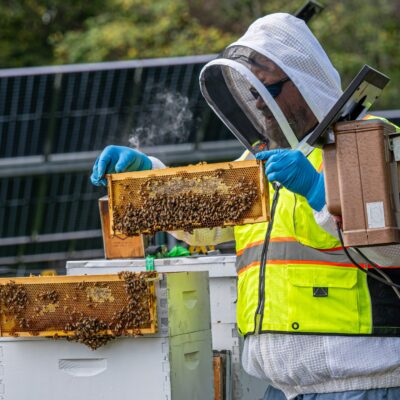By the time Robert Brent, Regional Coordinator for Virginia’s Department of Environmental Quality (DEQ), concluded his two-hour presentation at a recent public meeting on Water Quality in the Rivanna River Watershed, he had covered every facet of the Rivanna River’s impairment, from the confluence of the North and South Forks to an unnamed tributary just below the Glenmore Sewage Treatment Plant (which is several miles before the Albemarle/Fluvanna County line). The total impaired length is 16.4 miles.
 Twenty-one percent of the Rivanna River samples contain E. coli or fecal coliform, making a 16-mile stretch in Albemarle County officially “impaired.” Twenty-one percent of the Rivanna River samples contain E. coli or fecal coliform, making a 16-mile stretch in Albemarle County officially “impaired.” |
Originally listed as such in 1996, the Rivanna has since been dissected by the DEQ into two categories of contamination, one that doesn’t support healthy aquatic life and another that has excess bacteria. For the latter, the river is tested for both E. coli and fecal coliform, both indicators of human and animal waste. No more than 10 percent of samples collected can exceed state standards for bacteria and the Rivanna is somewhere around 21 percent.
The DEQ will test to decide whether the source of the waste is human or animal, according to Brent. “We will do that by analyzing the distribution of sources in the watershed,” he says. He urged everyone to pick up after their pets. In more rural areas, livestock are often a source of contamination.
The DEQ also tests to see if the water-body can support healthy aquatic life by collecting and identifying benthic (bottom-dwelling) macro-invertebrates (animals without backbones). The numbers and kinds of different invertebrates are compared to a healthy reference stream.
“We’re looking to characterize the health of the stream and the water quality of the stream,” says John Murphy, a stream biologist and director of StreamWatch, a community-based organization that tests throughout the Rivanna basin and supplies the DEQ with data. He attributes some of the river’s contamination to the seemingly constant construction that infiltrates the water with silt. “Both the construction itself and the permanent alteration to the landscape create changes in the water,” he says.
Once a river is listed as impaired, the DEQ has 12 years to complete a study. This time, they will finish up in only 11 when the Rivanna report is released this November. “After we do a study we’ll try and come up with a clean-up plan,” Brent says.
C-VILLE welcomes news tips from readers. Send them to news@c-ville.com.






